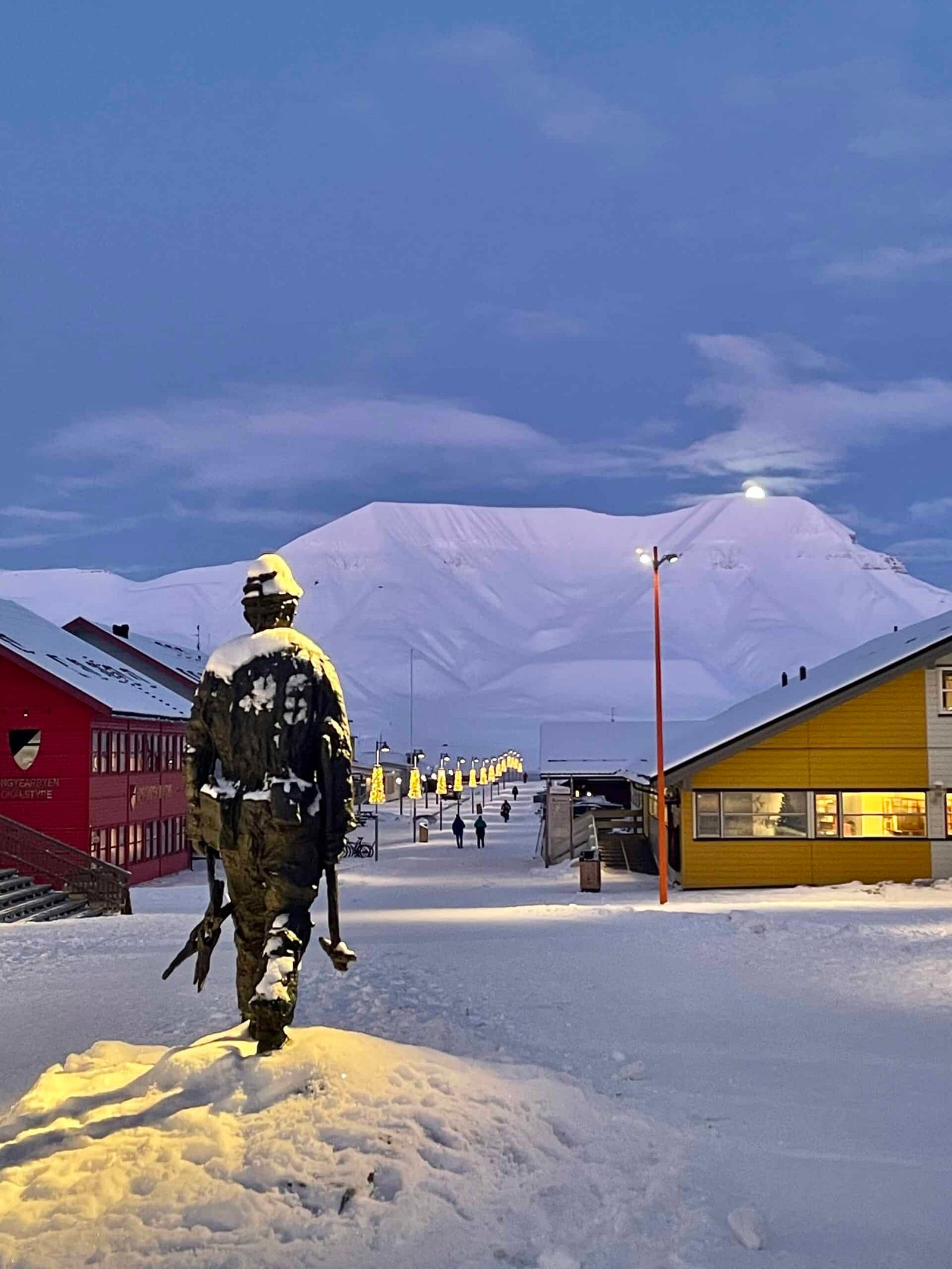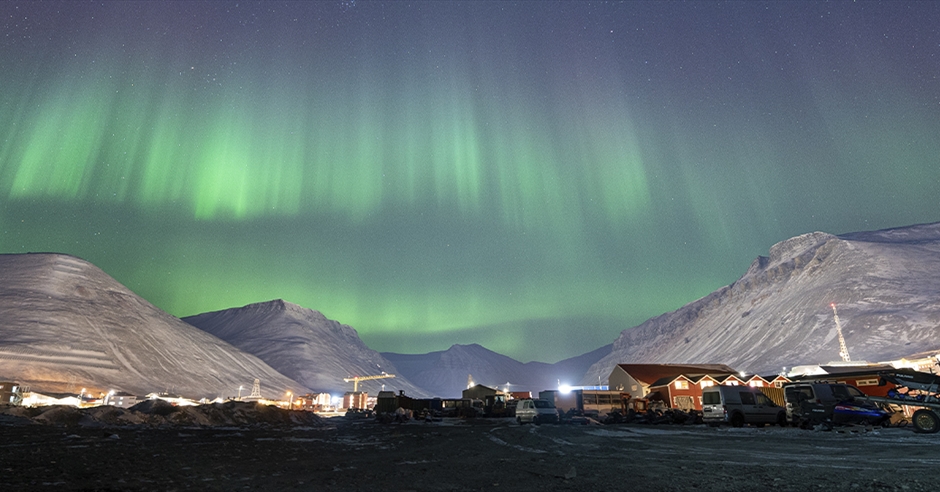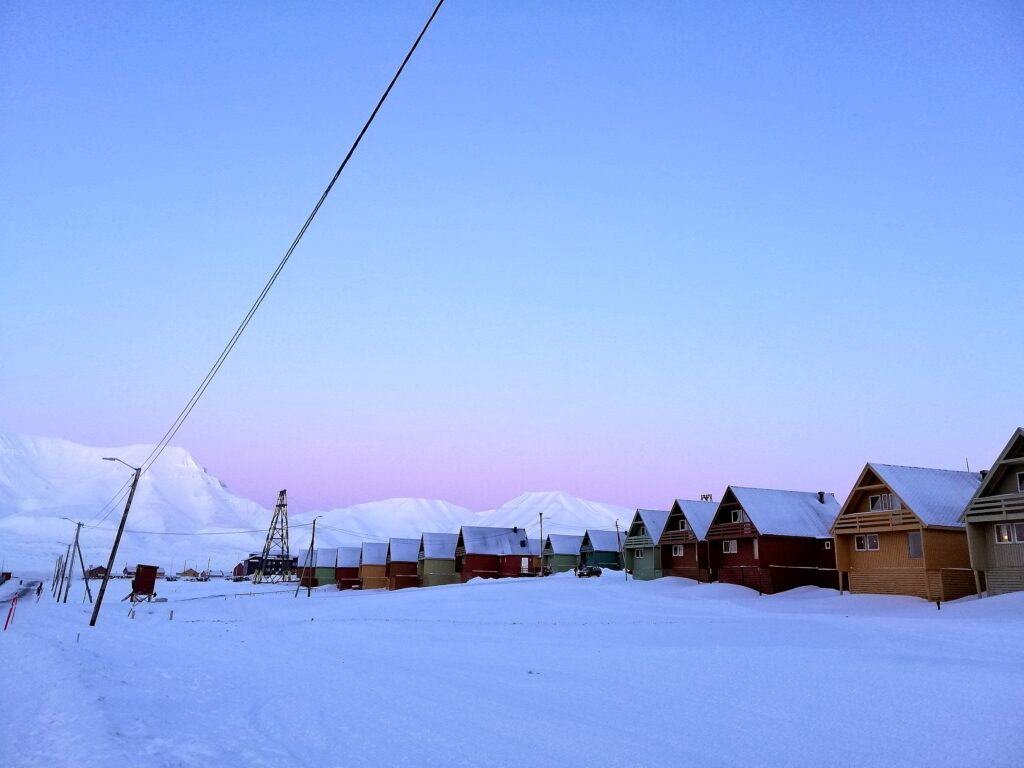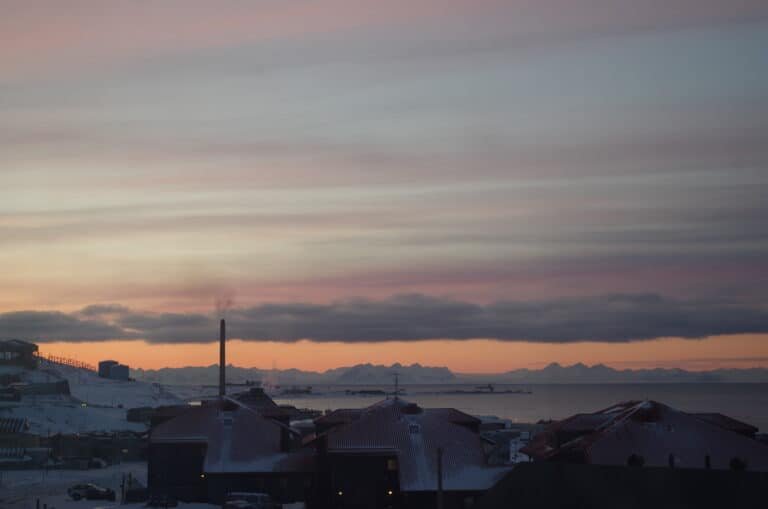Longyearbyen: Arctic Adventures and Sustainability Goals

Welcome to Longyearbyen, an Arctic adventure filled with breathtaking views and incredible activities. Located on Norway’s Svalbard archipelago, it is the northernmost inhabited settlement in the world. With a focus on sustainability and conservation, Longyearbyen offers visitors not only a unique experience of exploration but also a glimpse into the region’s future environmental goals. Be sure to come prepared for the frigid Arctic weather and dress appropriately!
The Rich History of Longyearbyen and Svalbard
Longyearbyen, located in the archipelago of Svalbard, is a unique place with a rich history. The town was founded by American John Munro Longyear in 1906 as a coal mining settlement. Today, it serves as the administrative center of Svalbard and offers visitors plenty of outdoor activities to enjoy.
From Coal Mining to Tourism
In the early days, Longyearbyen was solely focused on coal mining. It wasn’t until later that tourism began to take hold in the area. In fact, one of the most popular attractions for tourists visiting Longyearbyen today is exploring old abandoned mines.
Over time, regulations were put into place to protect both people and wildlife in Svalbard. The Svalbard Treaty, signed in 1920 by several countries including Norway and Russia, established sovereignty over the islands while also protecting their natural resources.
A Unique Arctic Experience
Situated farther north than mainland Norway or even Iceland, visitors can expect an unforgettable experience when they visit Longyearbyen. Boat trips are available for those who want to explore nearby fjords or see polar bears up close (from a safe distance!). Hiking trails offer stunning views of glaciers and mountains while snowmobiling tours provide an adrenaline rush through snowy terrain.
If you’re interested in learning more about life on this remote island outpost at nearly 80 degrees North latitude then there’s no better way than taking part in one of many guided tours offered throughout town – from historical walking tours around local landmarks like Nybyen and the Svalbard Museum to wildlife safaris where you can see reindeer, Arctic foxes or even polar bears.
This remote settlement was founded by American John Munro Longyear and has since developed into an important research center and tourist hub.
In this blog post, we will delve into various aspects of life in Longyearbyen such as coping with months without sunlight and sharing land with polar bears. We will also discuss ambitious sustainability goals that have been set by the local community including energy-efficient construction techniques and plans to switch to renewable energy within seven years.
The impact of climate change on the Svalbard Archipelago will also be examined along with green initiatives leading toward carbon neutrality. Lastly, we’ll touch upon how tourism plays a vital role in supporting these efforts through eco-friendly activities and local businesses committed to sustainability.
Longyearbyen’s Unique Location and Challenges
Located on the Arctic archipelago of Svalbard, Longyearbyen is the northernmost permanently inhabited community in the world founded by American John Munro Longyear.
Despite enduring months without sunlight due to its proximity to the North Pole, this frontier town boasts a diverse community with essential amenities such as schools, hospitals, shopping stores, hotels, restaurants, bars, and more.
Living alongside polar bears

With around 3000 polar bears in the Svalbard archipelago and Barents Sea, residents of Longyearbyen have learned how to coexist with these majestic creatures while ensuring their safety.
The Svalbard Treaty mandates strict regulations for protecting polar bear populations from human activities, requiring locals to carry firearms when venturing outside city limits for protection against potential encounters with these powerful animals.
Months-long darkness

Longyearbyen experiences extreme variations in daylight throughout the year, with winter months known as “Polar Night” enduring continuous darkness lasting up to four months at a time.
Conversely, during the summer season called “Midnight Sun,” residents enjoy 24 hours of sunlight daily for several weeks straight, allowing them ample opportunities for outdoor activities like hiking or boat trips to explore the stunning Arctic landscape.
Despite these challenges, Longyearbyen has managed to thrive and adapt, showcasing its resilience in maintaining a high quality of life for residents while working towards ambitious sustainability goals.
Remote communities like Longyearbyen can make significant strides in combating climate change despite facing harsh conditions unique to their location.
Ambitious Sustainability Goals for 2030
Longyearbyen aims to become carbon neutral by reducing emissions by 80% by 2030, despite facing harsh conditions unique to its location.
All-electric delivery fleet initiative
Local businesses in Longyearbyen are leading the way in adopting electric vehicles for deliveries and transportation, with support from mainland Norway.
Energy-efficient construction for houses and buildings
- New building codes mandate strict energy efficiency standards, ensuring minimal heat loss during long winters.
- Existing structures are being retrofitted with better insulation materials and modern heating systems powered by renewable sources.
- Locally sourced timber is used in construction to reduce reliance on imported materials and promote sustainable forestry practices.
Plans to switch to renewable energy within seven years
Longyearbyen is inspired by American John Munro Longyear and is determined to thrive even farther north than ever before imagined possible by transitioning away from coal-fired power plants towards cleaner sources like hydroelectricity, wind, solar, and geothermal energy.
These initiatives demonstrate Longyearbyen’s commitment to becoming a sustainable community despite its remote location, harsh climate, and unique challenges like sharing their land with polar bears.
Climate Change Impact on Svalbard
Global warming is causing temperatures in Svalbard to rise four times faster than the rest of the planet, and it’s not good news for polar bears.
Melting Glaciers and Sea Ice Loss Affecting Wildlife Habitat
Climate change is causing the melting of glaciers and sea ice in Svalbard, resulting in a potential decline of polar bear populations by 30% within three generations.
Polar Bears International warns that polar bear populations could decline by 30% within three generations if current trends continue.
Increased Frequency of Extreme Weather Events
- Landslides: Thawing permafrost destabilizes slopes, increasing the risk of landslides that can cause severe damage to infrastructure.
- Floods: Melting glaciers contribute to higher water levels, resulting in floods that can affect both human settlements and natural habitats.
- Storm Surges: Decreased sea ice coverage allows for stronger waves and storm surges that can cause coastal erosion and damage infrastructure.
Longyearbyen is taking proactive measures such as relocating critical infrastructure farther north from potential landslide zones and investing in more resilient construction methods to adapt to climate change while also working on reducing emissions through ambitious sustainability goals.
Hearts In Ice Expedition Highlights Efforts Toward Sustainability
Hearts In Ice, a climate-action organization founded by two women who were firsts overwinter soloists from Norway’s remote regions, organized an expedition that showcased various sustainable initiatives.
The four-day journey was attended by staff members from Polar Bears International, and it highlighted how even in harsh conditions, communities can make strides toward combating climate change.
The expedition took participants on boat trips around Svalbard, where they got up close to its unique wildlife such as polar bears and walruses.
The expedition participants had the opportunity to observe first-hand how global warming has been affecting these creatures’ habitats due to diminished glaciers and sea ice.
The group visited research stations farther north than mainland Norway which is dedicated to studying Arctic ecosystems under threat from climate change.
- American John Munro Longyear: The team paid tribute to American John Munro Longyear – founder of Longyearbyen – whose vision for this frontier town has evolved into a thriving community committed to sustainability despite its challenges.
- Svalbard Treaty: Participants learned about the history behind the Svalbard Treaty signed in 1920 that established Norwegian sovereignty over this archipelago while allowing other countries access for scientific research purposes related mainly toward understanding Earth’s changing environment at the North Pole latitudes. Source
- Eco-friendly Initiatives: The group observed various eco-friendly initiatives being implemented by Longyearbyen residents, including efforts to reduce plastic waste and promote recycling, as well as investing in renewable energy sources such as solar panels.
By showcasing these inspiring sustainability projects during their expedition, Hearts In Ice not only highlighted the importance of environmental stewardship but also demonstrated that even remote communities like Longyearbyen can make a significant impact in fighting climate change.
This serves as an inspiration for other settlements worldwide facing similar challenges and reinforces the message that every individual’s actions matter when it comes to preserving our planet for future generations.
Hearts In Ice organized an expedition to showcase sustainable initiatives in Longyearbyen, a remote community committed to combating climate change. The journey highlighted eco-friendly projects such as reducing plastic waste and investing in renewable energy sources, demonstrating that even small communities can make a significant impact on environmental stewardship.
Exploring Other Remote Settlements Around Svalbard
Discover unique experiences and insights into life in the Arctic by exploring other remote settlements around Svalbard.
The Unique Experience of Visiting Ny-Alesund

Ny-Alesund, situated even farther north than Longyearbyen, is home to sensitive scientific equipment that requires tourists to switch off all transmitting devices upon arrival.
- Take a boat trip along Ny-Alesund’s picturesque coastline and spot polar bears and other wildlife.
- Visit the northernmost post office in the world and send a postcard from this unique location.
- Learn about the fascinating history of mainland Norway’s presence on Svalbard through various historical landmarks.
Discovering the History of Barentsburg
Barentsburg, an abandoned Russian mining settlement, still houses various facilities like schools, stores, research centers, and more.
- Venture into the deserted coal mines that were once fundamental to Barentsburg’s prosperity.
- Visit the local museum which showcases artifacts from Barentsburg’s mining history and Russia’s presence on Svalbard.
- Take part in guided tours that provide insights into life during Soviet times and how it has shaped modern-day Barentsburg.
Outdoor Adventures in Svalbard

From October to February, Svalbard experiences dark and chilly winter months. However, the absence of daylight provides a unique opportunity to witness the northern lights both day and night. Imagine seeing the northern lights during the daytime – that would be incredible! You could also go on a winter hike to visit an ice cave or join a dog sled expedition.

The months of spring, from March to mid-May, are a fantastic time to visit Svalbard. The sun is beginning to show itself again, the temperature is rising slightly, and there’s enough snow on the ground that offers opportunities for hiking, snowmobiling excursions, dog sledding, boat cruises, and walrus expeditions while ski expeditions are also possible.

During the summer season, which runs from mid-May to September, you have the opportunity to engage in various activities such as kayaking, hiking, taking arctic cruises, going on a walrus safari or ATV safari, trying fishing trips, fat tire biking, and even dog sledding on wheels.
Svalbard is a paradise for outdoor enthusiasts who love to explore the wild and rugged landscapes. The island offers a wide range of activities that cater to all levels of adventure seekers. From boat trips to kayaking, hiking, snowmobiling, and dog sledding – there’s something for everyone.
To find out more about activities and tours in Svalbard all year round, visit the official website of Visit Svalbard. With a wide range of options available, it may seem daunting at first glance, but using filters such as season, type of activity, and length will help you narrow down your choices.
A Beacon Of Hope For Remote Communities Worldwide
Longyearbyen, the northernmost permanently inhabited community in the world, is leading the way in sustainability and resilience for other remote communities across the globe.
Longyearbyen’s ambitious goal to reduce emissions by 80 percent by 2030 is being achieved through various sustainable projects, including an all-electric delivery fleet, energy-efficient construction, and plans to switch to renewable energy.
Svalbard’s efforts to adapt and become more sustainable serve as an example for communities everywhere, showing that tackling climate change is possible.
Go on a voyage to Svalbard and behold the magnificence of its polar bears, as well as the effects of the Svalbard Treaty granting Norway authority over this archipelago.
Discover the allure of the North Pole and the thrill of exploring the farthest north with expeditions to this iconic destination.
Join the global effort to combat climate change and follow Longyearbyen’s lead in implementing sustainable initiatives for a greener future.
FAQs
What is special about Longyearbyen?
Longyearbyen is a small town located in the Arctic region of Norway. It is known for being one of the world’s northernmost settlements, and its unique location gives it an incredibly diverse range of outdoor activities to explore. Longyearbyen has some incredible landscapes including glaciers, mountains, tundra, and valleys all with plenty of wildlife to observe. The climate also allows for year-round activities such as skiing, snowmobiling, dog sledding and even kayaking! With high-quality outdoor gear available from local stores or online retailers- Longyearbyen is perfect for those looking to experience the great outdoors in a safe yet adventurous environment.
What’s the Svalbard controversy?
The Svalbard controversy involves geopolitical disputes over sovereignty and resource rights in the region due to its strategic location and potential natural resources.
Is Longyearbyen safe to walk in?
Walking within Longyearbyen is generally safe, but visitors must take precautions when venturing outside town limits due to polar bear presence.
Why visit Longyearbyen?
Tourists visit Longyearbyen to witness stunning Arctic landscapes, and unique attractions, and experience outdoor adventures like dog sledding or snowmobiling during winter months while supporting sustainable tourism initiatives.
Conclusion
Discover Longyearbyen, the world’s northernmost town, where adventure awaits with activities like exploring smaller settlements and visiting The North Pole Expedition Museum.
Experience life with polar bears and months without sunlight, all while admiring the town’s commendable sustainability goals, including energy-efficient construction, plans to switch to renewable energy, and green initiatives leading towards carbon neutrality.
Longyearbyen is a beacon of hope for remote communities worldwide in combating climate change, with eco-friendly activities for tourists and support for local businesses committed to sustainability, such as the all-electric delivery fleet by Bring Cargo AS.





